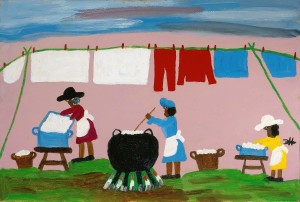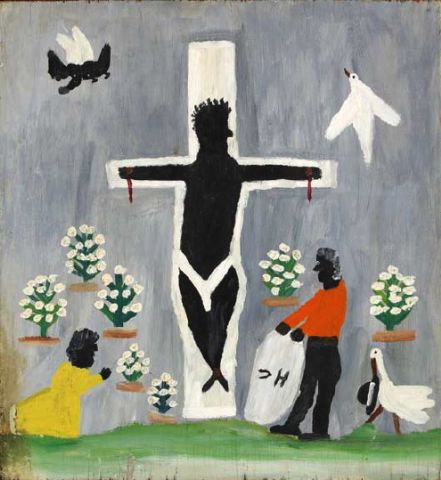
Clementine Hunter
An extraordinary life
From her humble beginning (c.1886-1887-1988) as the illiterate child of former slaves on a cotton plantation in Louisiana, Clementine Hunter rose to heights almost unimaginable for a person of her status and race at that time. At one of the early exhibitions of her work it is reported that she was not even permitted to enter the gallery until after closing time because of the color of her skin. But that was destined to change.
By the end of her life, over a century later, her biography had appeared in the Encyclopedia Britannica; her photograph and artwork had been reproduced in dozens of magazines, including Look, Ebony, Holiday, and The Saturday Evening Post; she had been the subject of countless articles and of several scholarly books; her paintings had been shown in exhibitions all across America (one of which was in the Smithsonian Institution in Washington, D.C.) and had been sold for thousands of dollars by the world-renowned auction house, Sotheby’s, in New York; her works had become part of important private collections and were in the permanent collections of many prominent museums, among them the Dallas Museum of Fine Arts and the Museum of American Folk Art in New York. She had been the recipient of several substantial artistic grants; had been invited to Washington D.C. by the President of the United States to open an exhibition of her paintings; had seen her work featured on the United Nations UNICEF calendar; and had been awarded an honorary degree of Doctorate of Fine Arts. A search of the internet will produce hundreds of pages about Clementine Hunter and her art. The list of accolades and sources of information is almost limitless.
Clementine Hunter is estimated to have created as many as five thousand pieces during her lifetime. When she began painting in her fifties, her works were either given away or sold for ten to twenty-five cents each. Today her early paintings can bring tens of thousands of dollars and are becoming increasingly scarce. The most remarkable thing about Hunter’s paintings and their success is that they are not works of technical virtuosity. They are for the most part very simple and childlike, which has made them sometimes the object of derision: “My kid could have painted that,” commented one viewer on seeing a Clementine painting of plantation life.(copyright www.clementinehunterartist.com)




